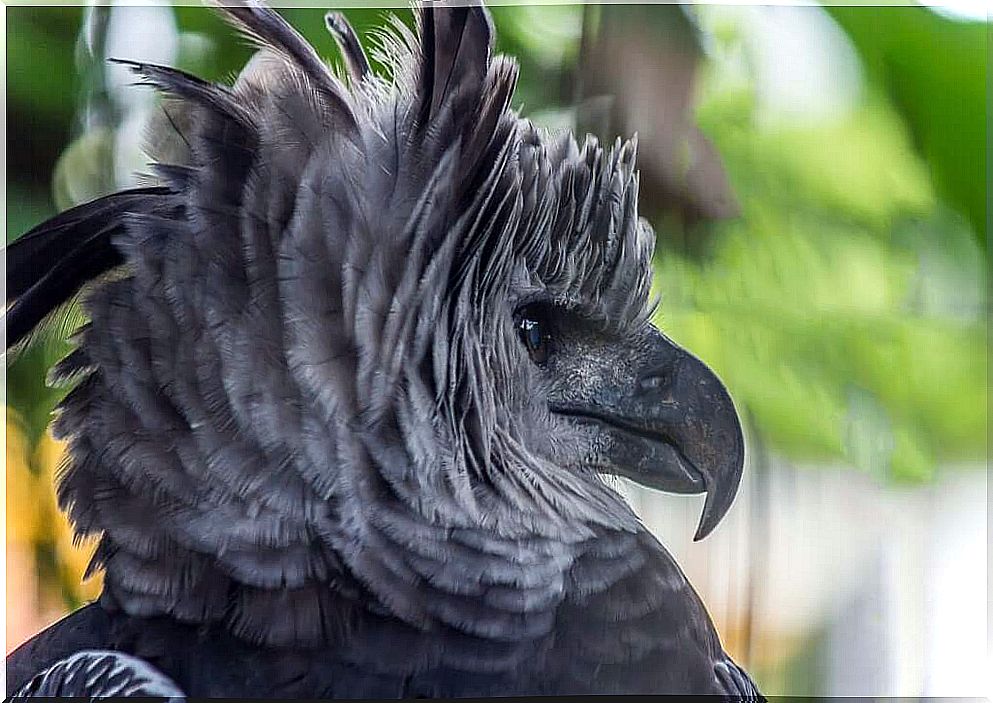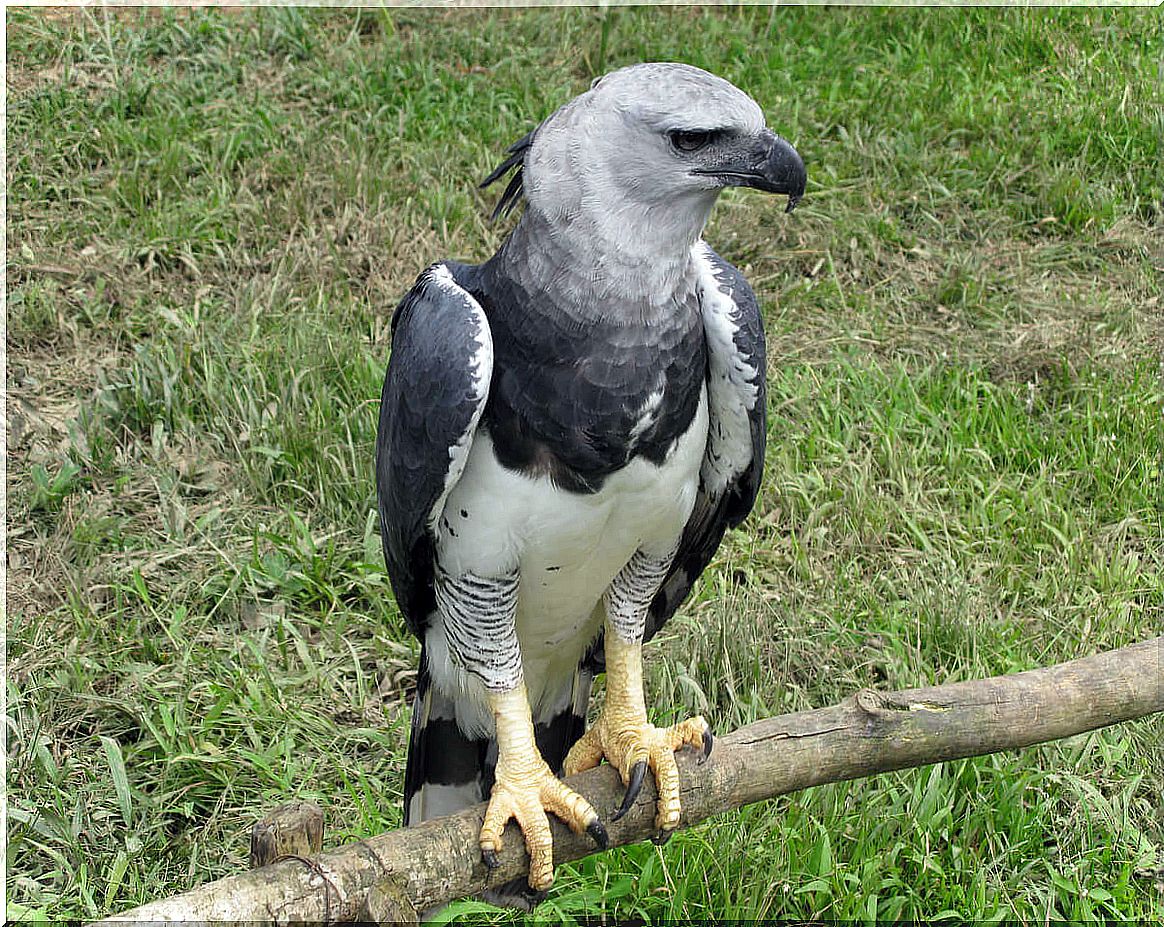Hawk: The Largest Hawk In South America

Harpy harpyja or harpy eagle is the largest and most powerful bird of prey that lives in the Amazon forests. About 60 species of eagles are known in the world, among them only two live in the United States and Canada and another nine in Central and South America. The species that make up the rest of the group are native to Africa and Eurasia.
It is interesting to know that its name comes from the harpies of Greek mythology. Harpies were originally described as beautiful winged women, daughters of Electra and Thaumante. In general, this bird is also known by the name of the harpy eagle and it is estimated that they can live for 25 to 35 years.
Taxonomic classification of the harpy eagle
It is common to find a confusing picture in the taxonomy of these birds. However, the advent of molecular techniques opened the way for its classification. Currently, it is recognized that three genera, Harpy, Morphnus and Harpyopsis constitute the same clade.
It should be noted that each of these genera has only one species. Furthermore, the species Harpia harpyja and Morphnus guianensis share the same geographic distribution and some physical characteristics. Therefore, it is common for them to be confused.

Size and plumage are the most prominent features of the harpy eagle.
As for the body size, it can vary from 89 to 102 centimeters, while the wingspan can reach two meters in the adult female. In general, males are smaller, weighing between 5 and 8 kilos compared to females, which reach between 7 and 9 kilos.
It is typical of the species that the adults have the plumage of the mantle, the scapulars, the external part of the wings and the loin of a slate-black or dark gray color. The tail is composed of long gray feathers with horizontal black bars. Also, the chest, belly and flanks are white or light gray with black horizontal stripes.
The head and thighs are light gray and the neck has a dark band. A forked crest or crown of long black feathers that spread out when threatened stand out in this bird. Some experts suggest that the crown could be used to focus sound, similar to an owl’s facial disc.
Characteristics that make it easy for the harpy eagle to be confused with its relative, the false harpy eagle
First, it is necessary to highlight that, during the bird’s development, the harpy eagle’s plumage undergoes at least four color changes until it reaches the adult stage. In fact, these birds reach full adult plumage after 4-5 years of life.
Thus, the youngest are no longer entirely white puppies and start to have a creamy gray back and black-spotted wings. In the juvenile state, they have a tail with 7-8 black bars and a crest much fuller than the adult bird.
The baby harpy eagle, on the other hand, is mostly white with darker wings and is distinguished from the harpy eagle by its slightly smaller size and finer shape, so it can be easy to confuse the two species.
One way to distinguish them is that the harpy eagle’s crest is longer and more noticeable, clearly separated into two points, with a fork in the middle. In addition, it is also useful to observe them in flight: only the harpy eagle displays its black and white bars on its wings.
The geographic distribution of the harpy eagle
These birds inhabit tropical and subtropical forests, plains and hills. Given the constant intervention of these areas in Central and South America, the species has adapted to some degree to the fragmentation of its habitat.
Thus, the harpy eagle is able to survive in isolated stretches of primary forest, selectively logged forest and secondary forest, if it offers some large trees. In addition, its normal range is 0-800 meters above sea level, but it has been recorded up to 2000 meters above sea level.
The species is distributed south of Mexico and Central America, south of Colombia and Venezuela, and east of Bolivia, Brazil, northeast of Argentina and Paraguay. Harpy eagles previously occupied western Colombia and Ecuador, but were driven out of those regions.
The harpy eagle is a powerful predator
This bird of prey has a varied diet. Several studies suggest that their favorite food is arboreal mammals such as sloths. It also hunts monkeys, agouti, armadillos and deer. It can feed on birds, such as macaws and other parrots, and reptiles, including large lizards and snakes.
There are reports that this predator can hunt prey that exceed its own weight. Like most hunters, it helps keep populations under control. Therefore, the harpy eagle plays an important role in controlling mesopredators such as capuchin monkeys.
behavioral traits
The harpy eagle is a strongly territorial diurnal predator, requiring areas of at least 30 square kilometers for adequate hunting. Additionally, these birds form monogamous pairs that mate for life. It is common to see pairs with a third juvenile eagle: the chick.
It should be noted that these birds use vocalizations to communicate with each other and during mating rituals. They often produce vocalizations while sitting on perches, which is believed to be territorial behavior. This bird is incredibly skilled in flight, maneuvering through its dense forest habitat.
conservation state
The harpy eagle is on the IUCN Red List as a near-threatened species, with the observation that the population is declining. In general, the species has already been extirpated in areas with high human activity.

This is mainly due to the destruction of their habitat due to logging and agriculture. In addition, this issue includes the construction of works such as dams and reforestation with exotic species for the timber industry. Another threat is the trade between collectors and falconry.
There have also been reports of harpy eagles being hunted by farmers, who view these birds as cattle predators. Programs are being established to educate farmers and hunters to increase awareness and understanding of the harpy eagle.









